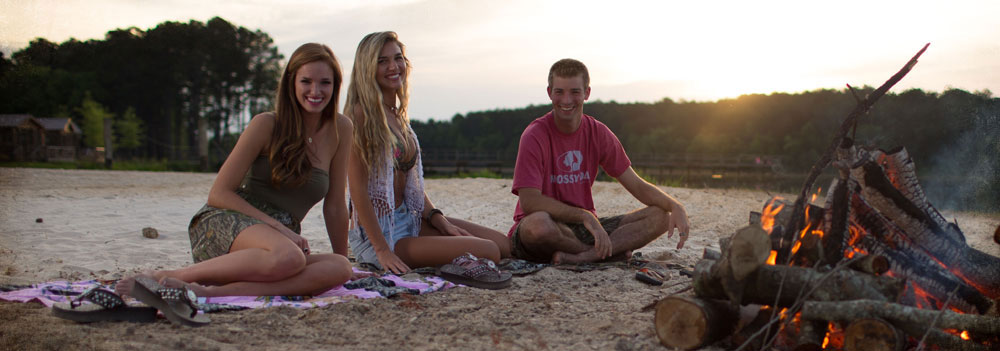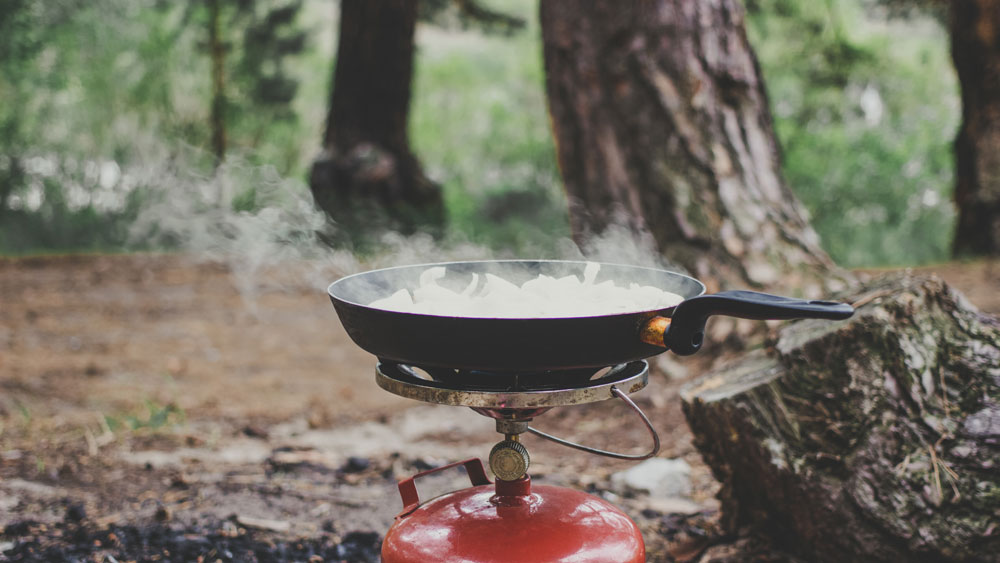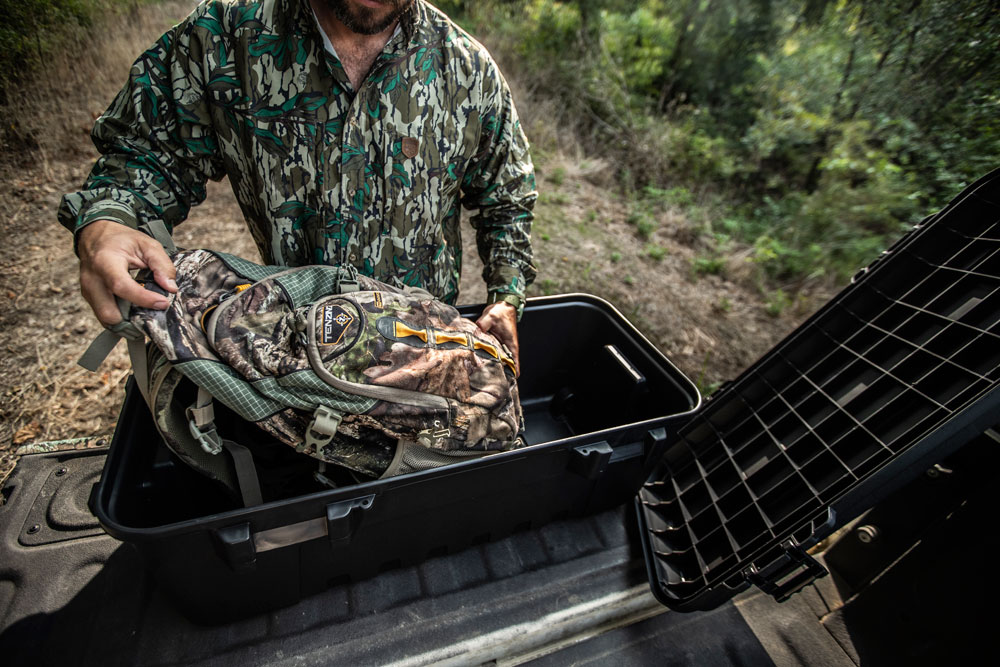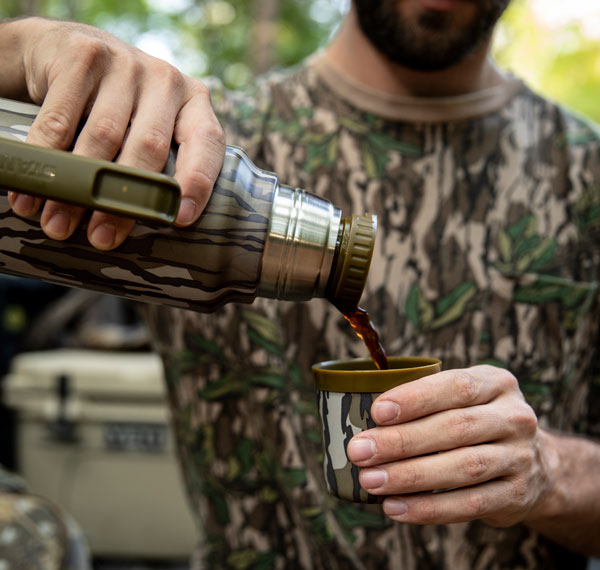When you’re heading out on a multi-day trek or overnight camping trip, it’s critical to think about how you’re going to fuel your body after intense physical exertion. Some of the best protein sources and quick meals for the trail require you to carry a compact, convenient backpacking stove to heat them.
You’re spoiled for choice when it comes to the selection on the market, but the right stove for your next backpacking adventure comes down to a few factors, including your budget and preferred fuel source. If you take the time to understand the benefits of each stove type, you can make an informed decision and invest in a product that will carry you through the exciting treks to come.
What Stove Type Should I Pick?
There are four primary types of backpacking stoves available on the market: canister stoves, liquid fuel stoves, solid fuel stoves and wood-burning stoves. Each has its own set of benefits and drawbacks; you should adapt your choice to the environment you’ll visit.
Canister Stoves
Canister stoves are the most commonly available stove type. They are easy to use, clean-burning (they rely on canisters containing propane, butane or similar gaseous fuels), easy to adjust and relatively lightweight. If you’re a beginner still learning how to prepare for a hike, a canister stove is an excellent choice for you.
The main drawbacks of canister stoves are the cost of fuel canisters, their non-refillable nature and their performance decline at high altitudes and under low temperatures.
Liquid Fuel Stoves
Liquid fuel stoves typically employ kerosene or camp fuel (also known as white gas), which you’ll usually find sold in one-gallon cans. They function well at any altitude and under any temperature, making them essential for winter or mountaineering.
Liquid fuel is inexpensive, and you can reuse the canisters as many times as needed. However, this stove type is heavier than other options, and you must handle the fuel with extreme care because it has the highest risk of spillage.
Solid Fuel Stoves
If you’ve ever used the foldable stove kit in an MRE, you’ve used a solid fuel stove. Purpose-built solid fuel stoves function on the same principle; they rely on burnable solid fuel tabs. All you need to light it is a lighter or matches. Once it’s burning, it’s ready; you can now place your pot, pan or container over the flame.
Solid fuel stoves are the lightest and easiest to use, and the fuel tabs are the safest and the most compact. However, they are also expensive, produce slow cooking times and are sensitive to wind and rain –– not ideal if you plan to go backpacking in extreme weather.

Wood-Burning Stoves
For the environmentally conscious backpacker, a wood-burning backpacking stove is an ideal solution. No need for canisters or fuel tabs; your fuel is free, natural and renewable.
While the environmental advantages of a wood-burning backpacking stove are self-explanatory, they are only a good option if the wood is abundant in your area. Avoid bringing this stove in the desert, a mountainous area or anywhere with sparse vegetation.
In addition, you have to contend with the same challenges found in campfire cooking; you need to find kindling every day, and it must be dry and ready to burn.
The Best Backpacking Stove by Type
Every type of backpacking stove has its own specifications, but not every stove is created equal.
Depending on your preferred type, here are the best stoves in each category.
Best Canister Stove: MSR PocketRocket Deluxe Stove
If the main features you need in a backpacking stove are a light weight and versatility, the MSR PocketRocket Deluxe is perhaps the best choice for you.
Weighing just 2.9 oz. (only 0.3 oz. more than the PocketRocket 2), the Deluxe offers a range of features typically seen only on larger and heavier models, such as push-start Piezo ignition and a wind-resistant broad burner.
The PocketRocket Deluxe allows you to expand your menu options without sacrificing weight. Like previous versions of the PocketRocket, this stove runs on isopropyl butane canisters and can boil a liter of water in just over three minutes.

Best Liquid Fuel Stove: Primus OmniFuel
The Primus OmniFuel is an award-winning liquid fuel stove and one of the top choices in its category.
Compatible with multiple fuels (canister gas, kerosene, white gas, diesel and aviation fuel), the OmniFuel will start a fire under almost any weather conditions, no matter what you have on hand.
Its wide burner lets you prepare meals for large groups, and its fine control valve allows you to control the size and heat of the flame with precision. It’s a must-have for mountaineering or high-altitude expedition.
Best Solid Fuel Stove: Esbit CS585ST
From the creators of the world’s most well-known solid fuel tablets, the Esbit CS585ST is a complete cooking set consisting of a hard-anodized aluminum stove unit and a stainless steel pot with a capacity of 20 fluid oz. The entire set weighs only 10.1 oz., making it an excellent choice for the ultralight backpacker.
Although it is designed primarily to function with Esbit 14-gram solid fuel tablets, it will also work with any other size or brand you can fit inside the stove. The kit also includes folding handles and a convenient mesh bag for easy transportation.
Best Wood-Burning Stove: Littlbug Junior
Cooking over a campfire has an undeniable charm and appeal, but backpacking stoves have the convenience and the portability you need. If you wish to bring the best of both worlds, you’ll need a quality wood-burning stove, such as the Littlbug Junior.
Although it looks diminutive, this small stainless steel stove is one of the most weight-efficient wood-burning stoves ever produced, weighing only 5.1 oz. and capable of maintaining a wood fire for several hours. In addition, the Littlbug Junior will also fit alcohol burners, providing you with an alternative fuel solution if you need it.
When it’s time to pack up and leave, you can disassemble the Littlbug Junior, breaking it down into four ultra-compact parts that fit inside a rolled-up sleeping bag. You won’t find a more convenient stove to carry!

Prepare for the Outdoors
Whether you need a simple stove to prepare the morning coffee or a complete stove kit to cook full meals for the day, making the right choice for your backpacking needs is essential if you need to keep your kit lightweight without sacrificing functionality.




























